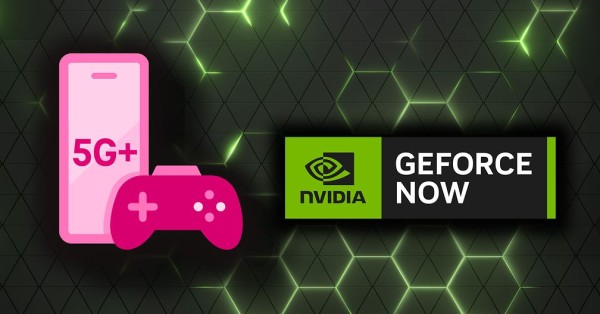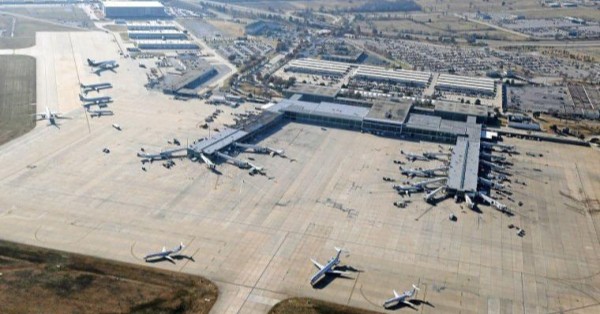Gamescom 2025: Telekom and NVIDIA unveil 5G SA mobile cloud gaming
A new 5G+ Gaming service pairs Deutsche Telekom’s 5G Standalone network with NVIDIA’s GeForce NOW to deliver latency-optimized gameplay on smartphones at a national scale in Germany.
Key details and launch timeline
Deutsche Telekom will roll out a free 5G+ Gaming option for eligible MagentaMobil customers starting in autumn 2025, integrating GeForce NOW for on-the-go cloud gaming with consistent responsiveness and stability. The service operates over Telekom’s 5G Standalone (SA) network, utilizing network slicing and L4S, with initial device support including Samsung’s Galaxy S24 Ultra and the S25 series, with additional handsets to follow. GeForce NOW provides access to a catalog of over 2,300 supported titles spanning major game stores, with additional install-to-play titles being added, and day passes (available for Performance and Ultimate tiers) for short-term access. Telekom positions this as the first latency-optimized mobile cloud gaming service at consumer scale on a 5G SA network in Europe.
How 5G SA, network slicing, and L4S power cloud gaming
The offer leverages two 5G SA capabilities for real-time apps: network slicing and L4S (Low Latency, Low Loss, Scalable Throughput). Slicing carves out a virtual, application-specific slice that isolates gaming traffic and prioritizes short, predictable response times versus best-effort flows. L4S, standardized by the IETF, reduces queueing delays and jitter by using an early congestion signaling method and tuned congestion control, helping stabilize gameplay even when a cell is busy. On the cloud side, NVIDIA plans to upgrade GeForce NOW to Blackwell architecture, enabling higher frame rates, ray-traced graphics, and AI-enhanced upscaling, which can stress networks; the 5G SA + L4S combo is designed to keep rendering and input latency competitive with local consoles under good radio conditions.
Market fit in Germany and 5G readiness
Telekom reports 98% population coverage with 5G and says its 5G+ features are available wherever its 5G footprint exists, providing the reach needed for a national consumer launch. Germany is also a mobile-first gaming market: tens of millions play on smartphones and tablets, making cloud delivery a logical path to premium titles without console ownership or large local downloads. With SA core deployments maturing and L4S becoming commercially viable, the timing aligns for an operator-scale, differentiated experience rather than a generic works on 5G claim.
5G monetization: from bandwidth to application-grade performance
The move reframes 5G from commodity bandwidth to application-grade performance that can support upsell, partner revenue, and stickier bundles.
Upgrading from best-effort to application-grade SLAs
Telecom operators have struggled to translate 5G investments into ARPU growth; application-aware QoS products like this create tangible reasons to upgrade and stay. A gaming slice with L4S translates into lower jitter and tighter response time distributionbenefits that users can feel in competitive titles. Packaging this as a selectable plan option, tied to a recognizable service like GeForce NOW, is a clear step toward value-based pricing and network API monetization models that many operators seek to scale.
Competitive positioning and partner differentiation
Where platforms like Xbox Cloud Gaming or Amazon Luna monetize primarily via content subscriptions, Telekom’s tactic removes a price barrier by offering the network enhancement as a free option for compatible tariffs and devices, while NVIDIA handles the content layer. This plays to each partner’s strengths: Telekom controls radio, core, and QoS; NVIDIA supplies the GPU cloud, content integrations, and client app. If attach rates drive plan upgrades and retention, the model could outperform pure content bundling for operators, especially in markets with dense 5G SA coverage.
KPIs for adoption, performance, and retention
Watch 5G+ Gaming attachment among MagentaMobil users, hours streamed per subscriber, session success rates under mobility, and churn impact. On the network side, monitor slice utilization, L4S adoption across devices and OS versions, and the distribution of gaming traffic across macro and small cells. For NVIDIA, track user growth on Android, Ultimate tier uptake, and performance consistency as Blackwell-based capacity scales.
Execution risks: network, cost, and policy
Delivering a console-like experience over a mobile network at scale introduces technical, economic, and regulatory risks.
Network engineering and cost constraints
Consistent low-latency performance depends on radio conditions, spectrum load, device support for L4S, and edge proximity to NVIDIA ingress points. Backhaul and peering paths can erase radio gains if not engineered end to end. Cloud GPU capacity is capital intensive; streaming high-fidelity sessions at 120 fps increases compute and bandwidth costs. Operators must balance slice sizing, admission control, and fair-use policies to avoid degrading other services while keeping the business case intact.
Content availability, distribution, and policy risks
Game licensing and regional availability ebb and flow, impacting perceived catalog value. App store policies, in-app payments, and potential net-neutrality scrutiny of prioritization features could complicate Go-To-Market in some jurisdictions. Battery drain on handsets, heat, and data consumption also affect user satisfaction; codec choices and adaptive bitrate strategies will need careful tuning for mobile sessions on 5G SA.
Next steps for operators and ecosystem partners
Early movers can turn this blueprint into a broader portfolio of low-latency services that monetize SA cores beyond gaming.
Action plan for telecom operators
Industrialize a playbook: define gaming-grade slice profiles, L4S policies, and admission controls; certify devices for L4S and 5G SA; and co-locate edge on-ramps to major gaming/CDN partners to shorten round-trip paths. Build transparent KPIs into consumer apps (latency, jitter, packet loss) so users can see the value. Explore adjacent use casesinteractive video, XR, and real-time collaboration with similar slice characteristics to amortize SA investments.
Priorities for device OEMs and platform partners
Accelerate L4S support and testing across chipsets and OS versions, optimize thermal and power profiles for sustained cloud gaming, and enable network telemetry APIs so operators can adapt slice behavior per session. Co-market certified gaming-ready on 5G SA devices and consider accessories (controllers, cooling) that lift experience without raising network load.
Guidance for game publishers and cloud providers
Optimize input pipelines and encoder settings for mobile networks using L4S, prioritize fast start and state sync to reduce perceived lag, and align release cadences with GPU capacity planning. Where feasible, participate in operator bundles or day-pass promotions to reduce entry friction and expand reach into mobile-first markets.
Bottom line: template for real-time apps beyond gaming
Deutsche Telekom and NVIDIA are turning 5G SA capabilities, slicing, and L4S into a visible consumer advantage with GeForce NOW, signaling a practical path to 5G monetization and setting a template other operators can adapt for real-time applications beyond gaming.






























